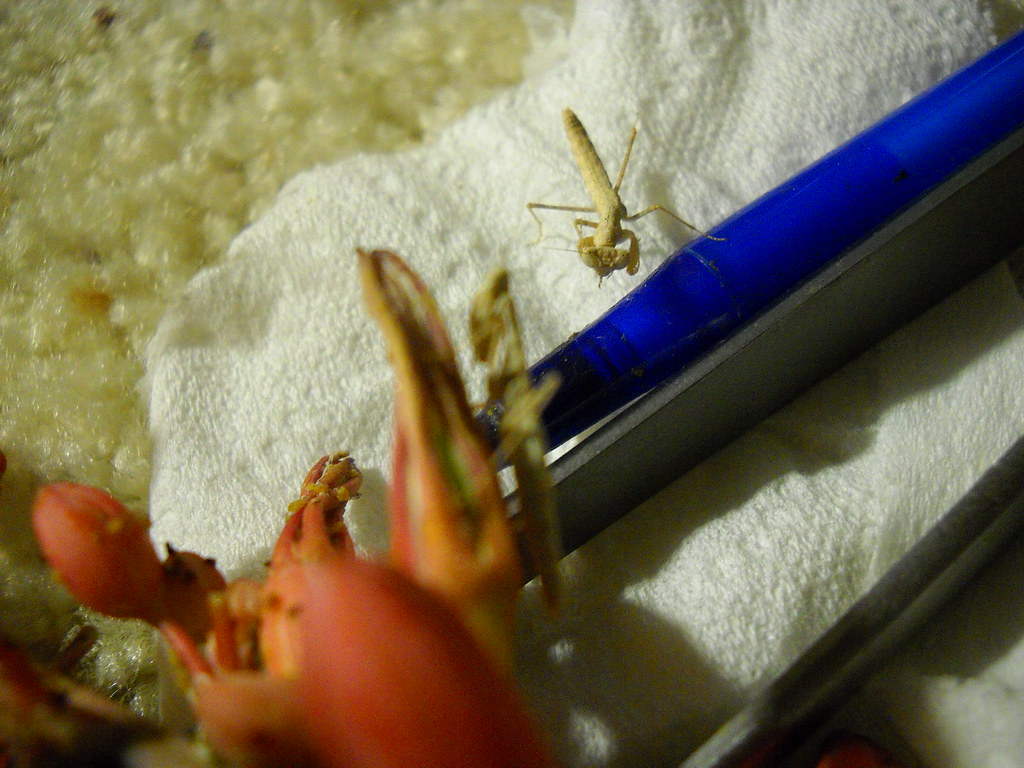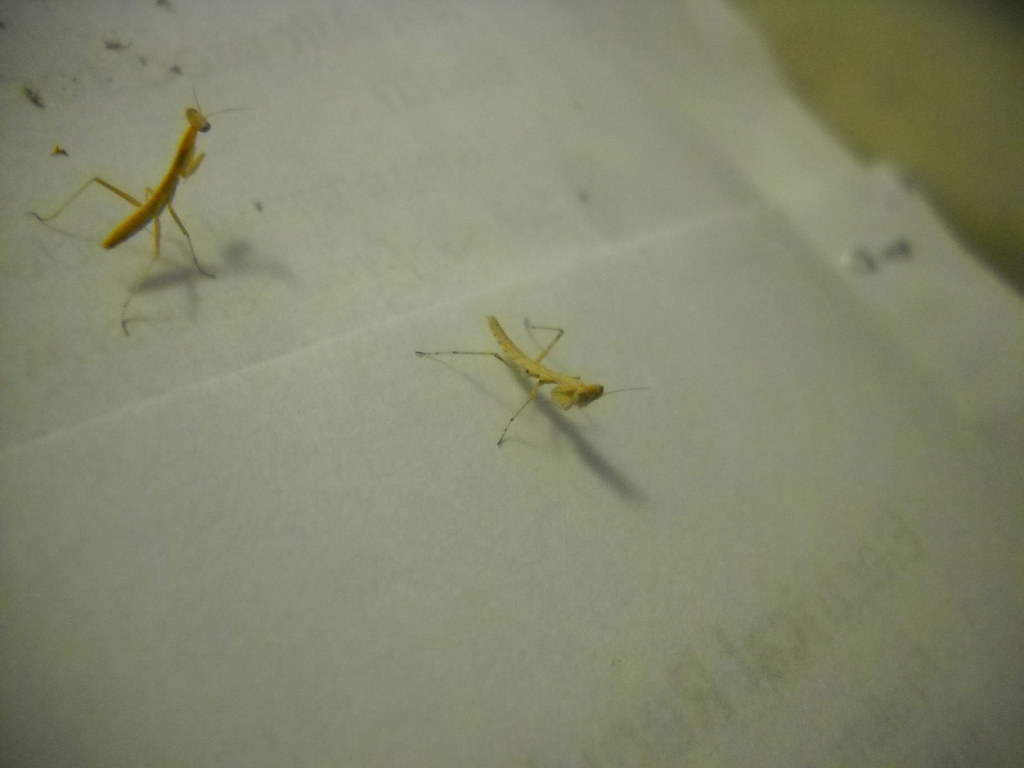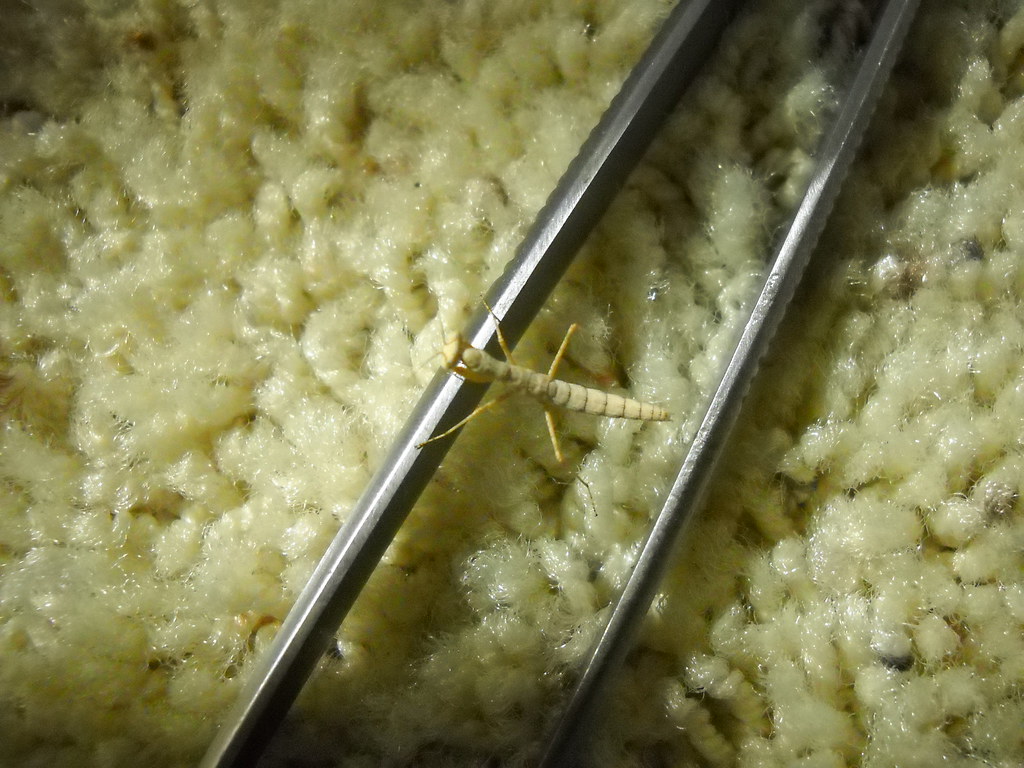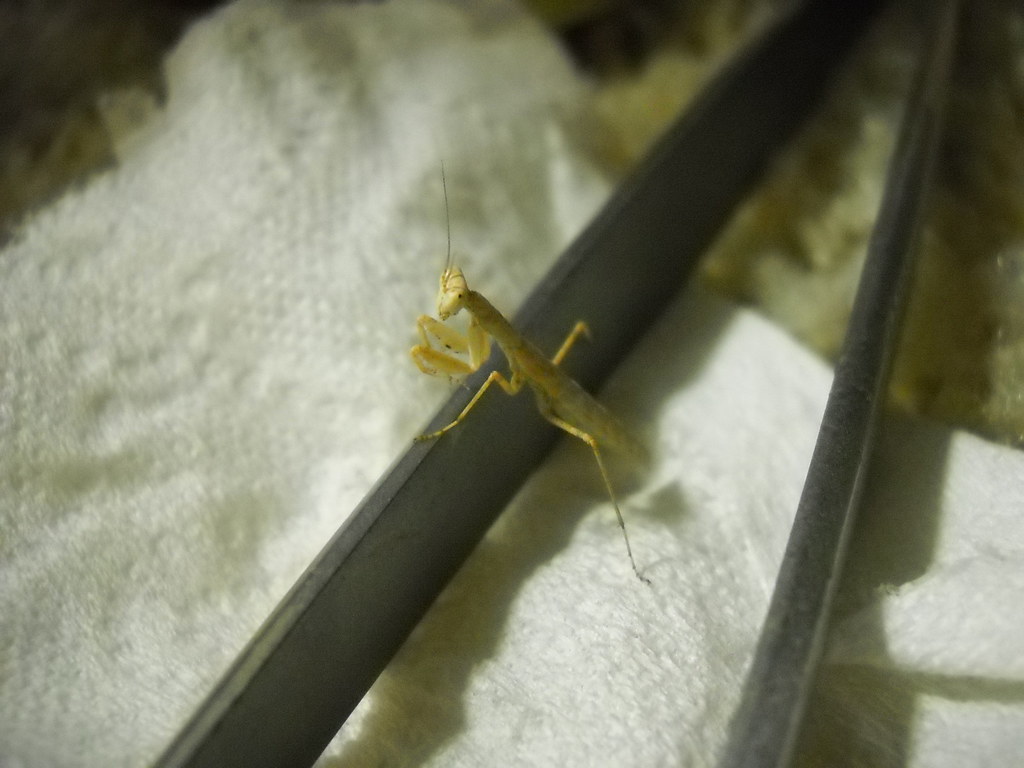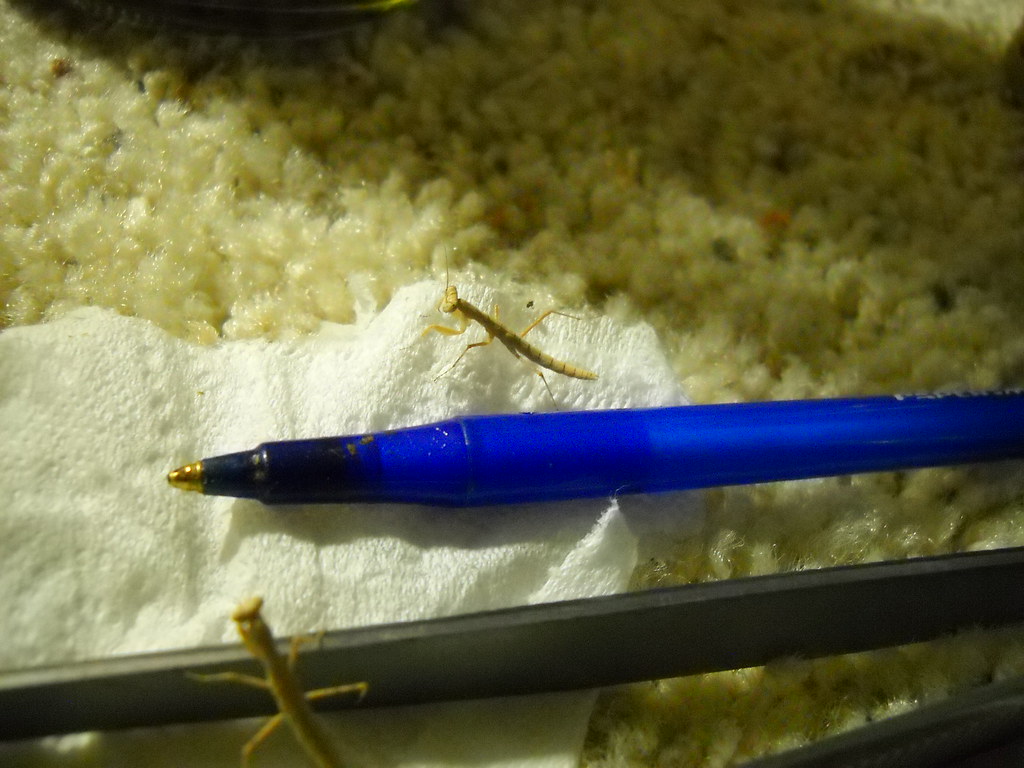MantidLord
Well-known member
Hey all, as some of you may know, a couple of weeks ago I caught 27 I. otatoria nymphs. Well, between yesterday and today, I've increased that number to well in the forties. However, I won't be keeping the newbies.
But, during my capture of 6 nymphs yesterday, I noticed that one would never jump, only run (making it kind of tricky to catch). Anyway, I caught it nonetheless and went on my way. But when I went home to organize everyone, that runner stuck out. Same size as everyone else, except its body stayed close to the ground and it has eyes like a locust. I knew it was a different species, but what?
That's right, L. minor! I've never fathomed them being in Nevada (even though they're a desert species), but here it was. So today, I set off to a bike trail to hunt some more. Immediately, the I. oratoria nymphs started jumping everywhere . Finally I started seeing L. minor nymphs of all sizes. I caught six total of those guys (who's population was far less dense than I. oratoria's who were everywhere).
But, during my capture of 6 nymphs yesterday, I noticed that one would never jump, only run (making it kind of tricky to catch). Anyway, I caught it nonetheless and went on my way. But when I went home to organize everyone, that runner stuck out. Same size as everyone else, except its body stayed close to the ground and it has eyes like a locust. I knew it was a different species, but what?
That's right, L. minor! I've never fathomed them being in Nevada (even though they're a desert species), but here it was. So today, I set off to a bike trail to hunt some more. Immediately, the I. oratoria nymphs started jumping everywhere . Finally I started seeing L. minor nymphs of all sizes. I caught six total of those guys (who's population was far less dense than I. oratoria's who were everywhere).













































